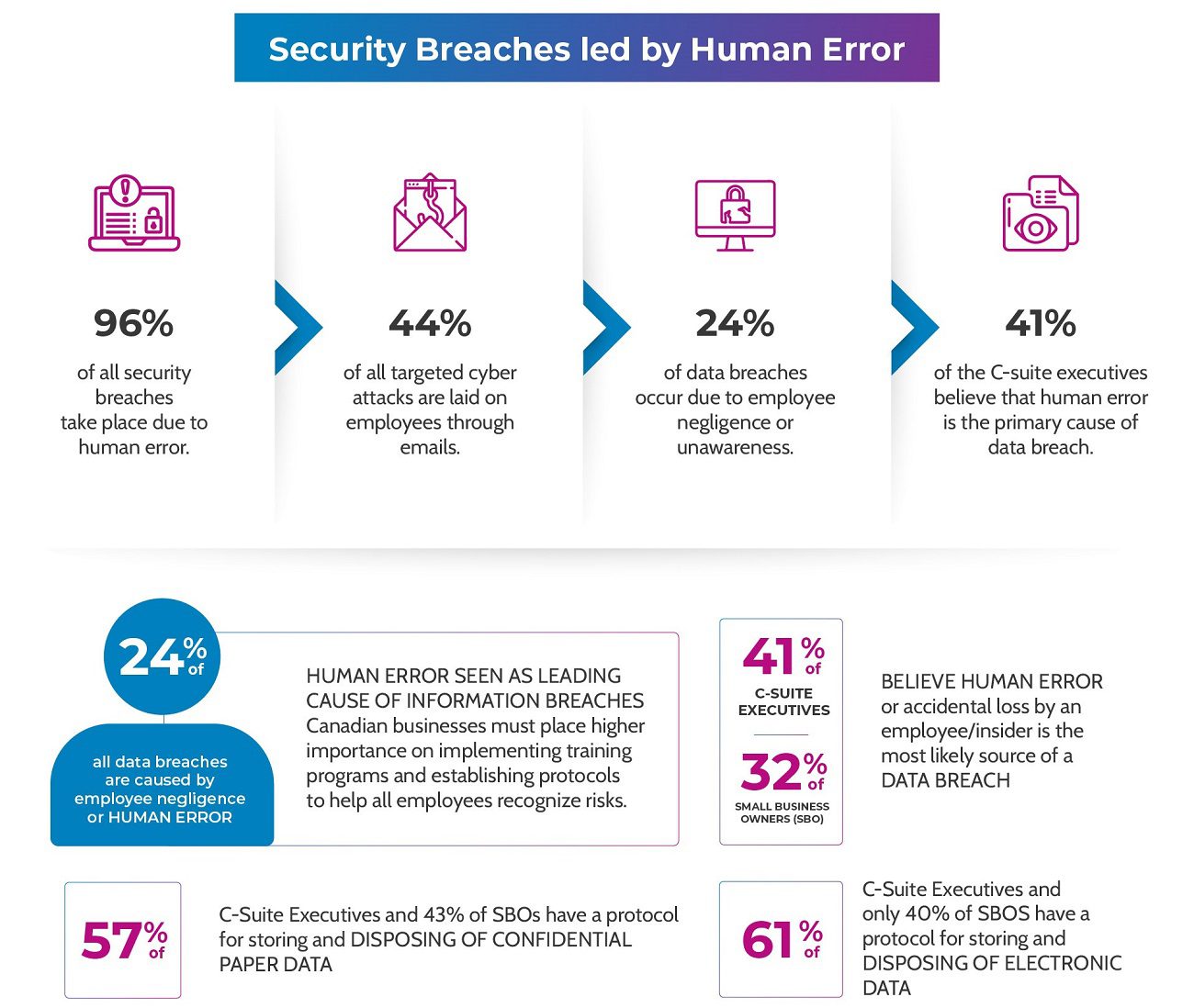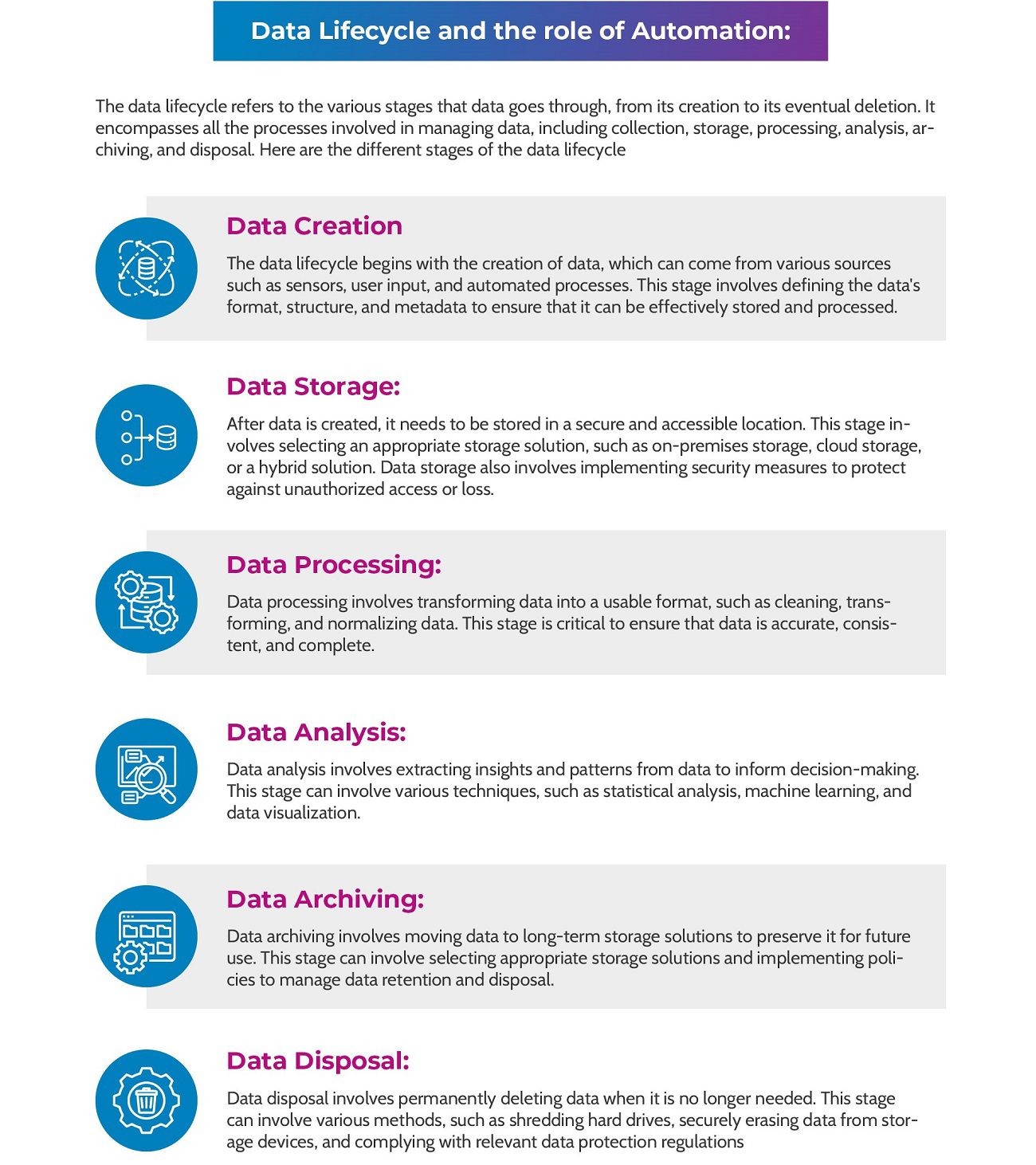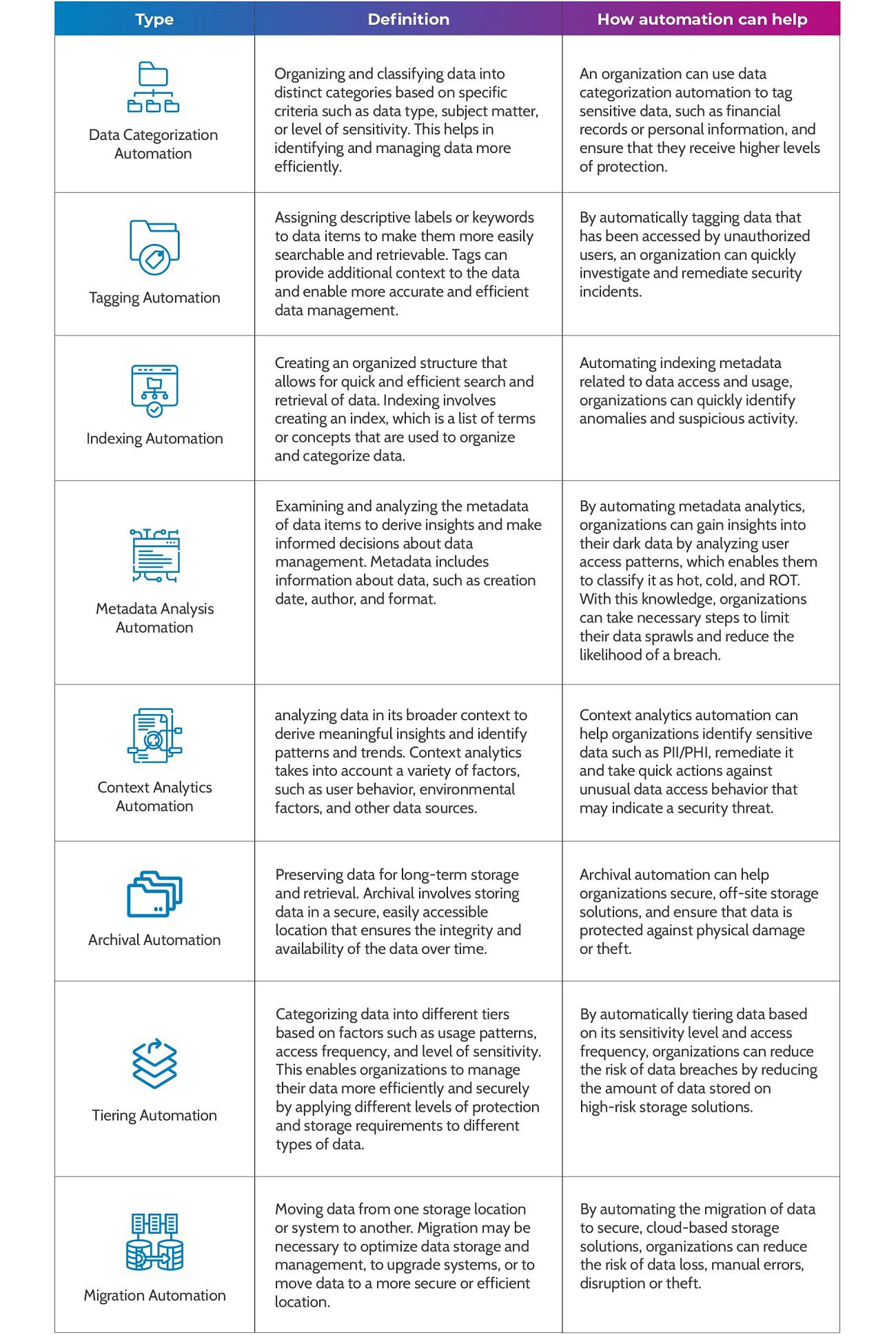Data breaches are a constant threat in today’s digital age. Whether it’s a cyber attack by sophisticated hackers or an innocent mistake made by an employee, the consequences of a data breach can be devastating. According to the World Economic Forum’s 2022 Global Risks Report, 95% of cybersecurity threats are linked to human error. And according to the 2022 Data Breach Investigations Report (DBIR), a whopping 82% of data breaches were caused by human error, social attacks, or misuse. Similar research by IBM Security puts the number at 95%.
In this scenario, organizations are turning to data automation tools to enhance their cybersecurity measures. Data automation can streamline and simplify several security processes, including threat detection and response, access control, and data encryption. In this blog, we will explore how data automation can help prevent cyber breaches and protect your organization’s critical assets from external threats.

What is Data Automation?
Data automation refers to the process of automatically collecting, processing, and transforming data through software tools and algorithms without human intervention. It involves using technology to streamline and simplify data-related tasks, such as data entry, data extraction, data analysis, and data visualization. Its inception can be traced back to the early days of computing, when businesses began using computers to process and store data. In the 1950s and 1960s, mainframe computers were used to automate data processing tasks, such as payroll processing and inventory management. However, these early systems were expensive and required specialized expertise to operate. Fast forward to the 1970s and 1980s, when the introduction of personal computers and software applications made data automation more accessible and affordable. This allowed businesses to automate data-related tasks with ease, thanks to programs such as VisiCalc and Lotus 1-2-3, which enabled users to manipulate and analyze data in real-time. Additionally, database management systems like Oracle and Microsoft Access allowed businesses to store and retrieve large volumes of data, making data automation even more exciting!
The internet and the proliferation of digital devices in the 1990s and 2000s brought about even more excitement in the data automation world. The rise of e-commerce and online marketing created a demand for tools that could process and analyze large amounts of data. Web analytics platforms and customer relationship management systems became essential in meeting this demand. Fast forward to recent years, and the growth of cloud computing and artificial intelligence has expanded the capabilities of data automation even further. Businesses can now automate more complex tasks and gain deeper insights into their data, making it easier and faster to generate insights and make informed decisions.
Today, data automation is an integral part of many businesses’ operations, from small startups to large multinational corporations. It has revolutionized the way businesses process and analyze data, making data-driven decision-making faster, more efficient, and more exciting than ever before! With the continued advancements in technology and the growing demand for data-driven decision-making, data automation is set to play a significant role in shaping the future of business and technology.
Data automation is also becoming an essential tool for businesses seeking to enhance their data security and reduce the risk of cybercrime. Automated processes can help organizations identify and isolate sensitive data, such as personally identifiable information (PII) and protected health information (PHI), to better protect against potential threats. Metadata and context analytics are two key components of data automation that can help identify and classify sensitive data based on its meaning and context.
Metadata refers to information that provides context about a given piece of data. For example, metadata might include the date and time a file was created or modified, the name of the person who created it, and other relevant details. By using automated tools to analyze metadata, businesses can gain insight into the nature of their data and identify potential vulnerabilities. This can help organizations to isolate sensitive data and apply remediation measures, such as data quarantining, access control, and audit.
Context analytics, meanwhile, involves the use of machine learning algorithms and other advanced technologies to analyze large volumes of data and identify patterns and relationships between different pieces of information. This can help organizations to classify data based on its meaning and context, making it easier to identify sensitive information such as PII and PHI. Once sensitive data is identified, context analytics can help organizations to apply appropriate remediation measures, such as data quarantining, access control, and audit.
- Data quarantining involves isolating sensitive data from the rest of the organization’s data to prevent unauthorized access. This can be achieved through the use of automated tools that can identify and segregate sensitive data based on its context and use.
- Access control refers to the use of automated tools to manage user access to sensitive data and restrict access to sensitive data based on user roles and permissions.
- Audit refers to the use of automated tools to monitor user activity and identify potential security breaches. Audit logs can be used to track user access to sensitive data and detect potential threats, such as unauthorized access or data theft. These logs can be used to generate alerts or notifications that can be used to prompt further investigation or remediation.
However, before automating any task, one must understand its granularities and components. Let’s examine the various components of data lifecycle management and how automation can help.

Data automation can help reduce cyber risk and enhance data protection by automating several of these processes. Here are some examples of how

Will Data Automation be Enough to Keep Our Sensitive Information Safe?
While data automation is a powerful tool for preventing data breaches caused by human error, it is not a silver bullet. Even with the best automation tools in place, there is still the risk of human error. As such, businesses need a comprehensive data security plan that includes training employees on proper data handling procedures, implementing strict access controls, and regularly monitoring systems for potential security threats.
Moreover, cybercriminals are becoming increasingly sophisticated in their methods, making it even more difficult to protect sensitive information. Therefore, businesses must remain vigilant and adapt to changing security threats. While data automation can help reduce the risk of data breaches caused by human error, it is only one piece of the puzzle. A comprehensive approach to data security is essential to keep sensitive information safe.
A unified unstructured data management platform can play a crucial role in data automation. It refers to the practice of bringing all the data scattered across different sources and formats under a single roof, making it easily accessible, searchable and manageable. By adopting this approach, organizations can automate various data-related tasks, such as data ingestion, transformation, processing, and analysis. The approach eliminates the need for multiple vendors and software, preventing unnecessary visibility into the enterprise data estate. With a single pane view of the entire enterprise data estate, businesses can gain a comprehensive understanding of their data landscape, thereby enabling them to make informed decisions, reduce redundancy, and optimize their operations. Moreover, by leveraging advanced analytics and machine learning algorithms, unified unstructured data management can help detect anomalies and suspicious activities in real-time, reducing the chances of cyber breaches and data loss. In today’s data-driven world, adopting a unified unstructured data management approach is no longer an option but a necessity for businesses to stay competitive and secure.
The Data Dynamics Advantage
The Data Dynamics unified data management platform is a comprehensive and efficient solution that empowers enterprises to optimize the value of their unstructured and voluminous data, all while maintaining top-notch security measures to ward off potential data breaches. By leveraging metadata and contextual analytics to categorize, tag, and index data, the platform is able to identify any personally identifiable information (PII/PHI) and apply appropriate security controls such as data remediation, data quarantining, access control management, and immutable audit logging. Additionally, the platform streamlines data management by providing automated access control and file security management within a single software. This eliminates the need for siloed software and multiple vendors, making it an all-in-one solution that addresses every aspect of data management. The platform’s advanced features allow organizations to manage and transform their enterprise data while preserving its integrity, making it an ideal solution for organizations seeking to enhance their data management practices, protect sensitive data, and prevent data breaches.
Here are two recent success stories:
- 21k files with sensitive data detected from 3M files scanned for efficient risk management and remediation for a Fortune 50 financial institution. Click to read.
- 700 TB of data scanned, categorized, and quarantined to avoid sanctions and reputational loss for one of the big four accounting firms and a Fortune 100 company. Click to read.
To learn more about how Data Dynamics can help automate your data management processes and enhance your security, please visit – www.datadynamicsinc.com or contact us at solutions@datdyn.com I (713)-491-4298.






